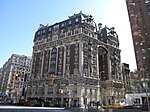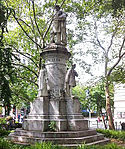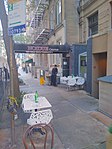Triad Theatre
Off-Broadway theatersSupper clubsTheatres in ManhattanUpper West Side
The Triad Theater, formerly known as Palsson's Supper Club, Steve McGraw's, and Stage 72, is a cabaret-style performing arts venue located on West 72nd Street on New York's Upper West Side. The theatre has been the original home to some of the longest running Off-Broadway shows including Forever Plaid, Forbidden Broadway, Spamilton, and Secrets Every Smart Traveler Should Know. The Triad Theater is currently owned and operated by Peter Martin and partner Rick Newman, founder of New York's famed comedy and music venue, Catch a Rising Star.
Excerpt from the Wikipedia article Triad Theatre (License: CC BY-SA 3.0, Authors).Triad Theatre
West 72nd Street, New York Manhattan
Geographical coordinates (GPS) Address Nearby Places Show on map
Geographical coordinates (GPS)
| Latitude | Longitude |
|---|---|
| N 40.778133333333 ° | E -73.980933333333 ° |
Address
Seven's Turkish Grill
West 72nd Street 158
10023 New York, Manhattan
New York, United States
Open on Google Maps










